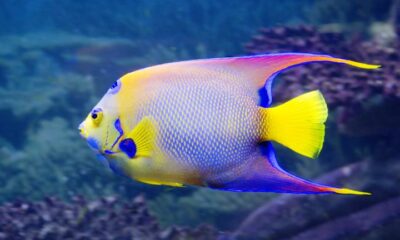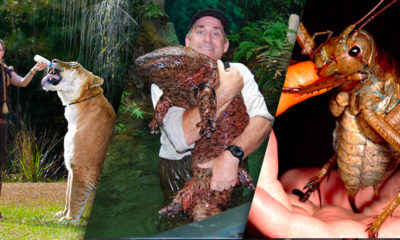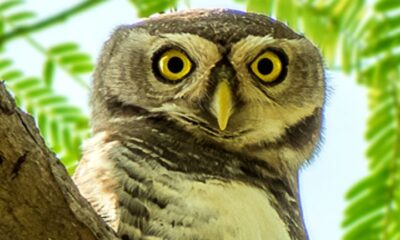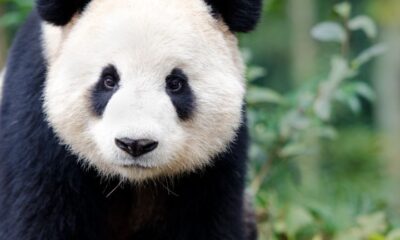ANIMALS
13 Most Unusual Rainforest Animals
Published
12 months agoon
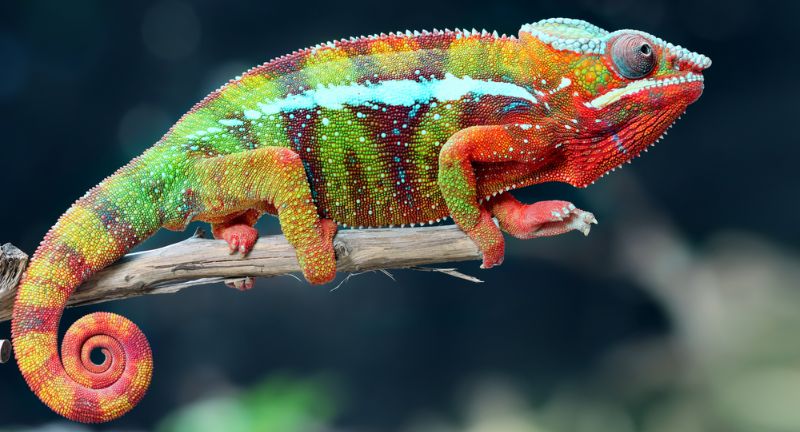
Shutterstock
The rainforest, Earth’s oldest living ecosystem, is a treasure trove of biodiversity, harboring some of the most unusual and intriguing animals found anywhere on the planet. Within its verdant embrace, from the dark, moist floor to the dizzying heights of the canopy, dwell creatures of astonishing variety and unique adaptations. The list of the 30 most unusual rainforest animals showcases the incredible diversity and evolutionary innovation that thrive under its dense canopy. These animals, ranging from the stealthy jaguar, with its silent paws and piercing gaze, to the tiny poison dart frog, whose vivid colors warn of its lethality, embody the mystery and the majesty of the rainforest. Each species, whether it flies, crawls, or swings through this verdant world, tells a story of adaptation, survival, and the interconnectedness of life, emphasizing the critical need to conserve these precious ecosystems for the health of our planet.
Glass Frog
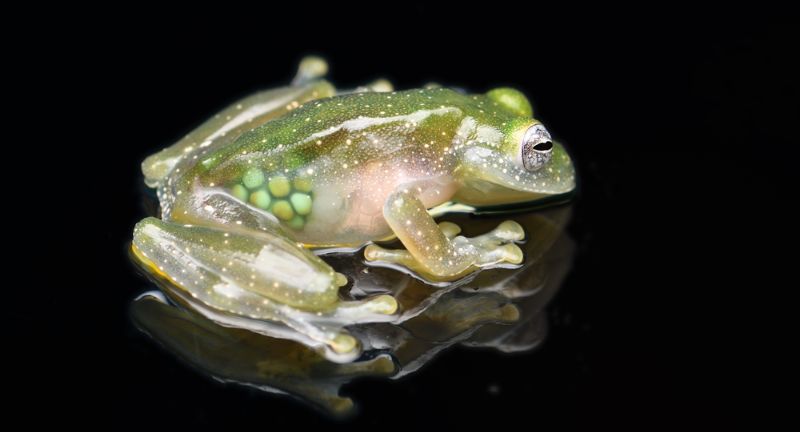
Shutterstock
The Glass Frog is renowned for its translucent skin, which allows a view of its internal organs from beneath. Native to the rainforests of Central and South America, this unique amphibian spends most of its life in the trees. The visibility of its heart, liver, and gastrointestinal tract makes it a subject of fascination among scientists and nature enthusiasts alike. Its almost invisible appearance serves as a natural camouflage against predators in the lush rainforests.
Okapi
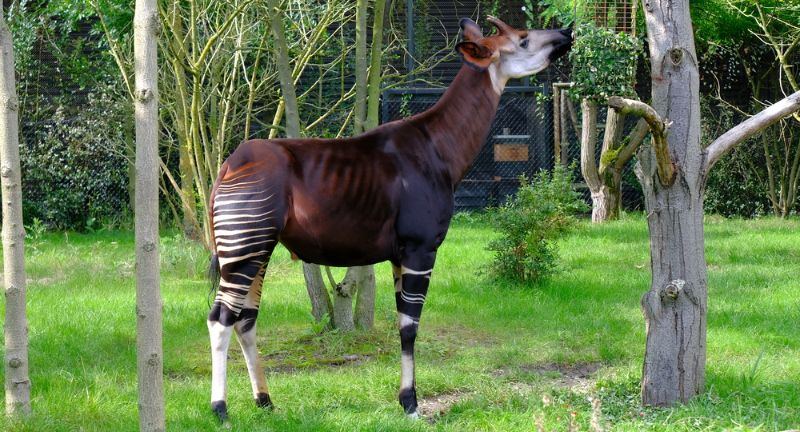
Shutterstock
The Okapi, often referred to as the forest giraffe, is native to the dense rainforests of the Congo in Africa. This elusive animal has striking features, including a long neck, zebra-like stripes on its legs, and a chocolate brown body. Despite its giraffe lineage, the okapi is a solitary creature, rarely seen by humans. Its diet consists mainly of leaves, shoots, and fruits, which it forages from the forest floor.
Proboscis Monkey
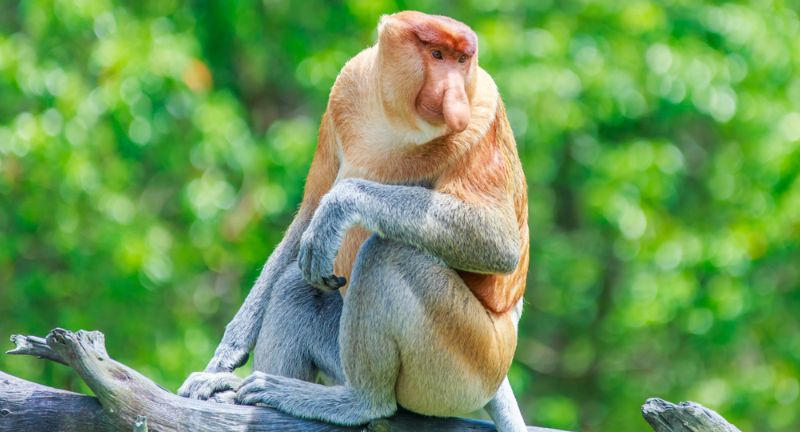
Shutterstock
The Proboscis Monkey is distinguished by its large, protruding nose, which is especially prominent in males and thought to be an attractive trait to females. Found exclusively in the mangrove forests and coastal areas of Borneo, this primate is an excellent swimmer, with webbed feet to aid in navigating its aquatic habitat. Its diet is primarily composed of leaves, seeds, and unripe fruits, which cause its stomach to be bloated, another distinctive feature. Conservation efforts are ongoing to protect this species, which faces threats from habitat destruction and hunting.
Hoatzin
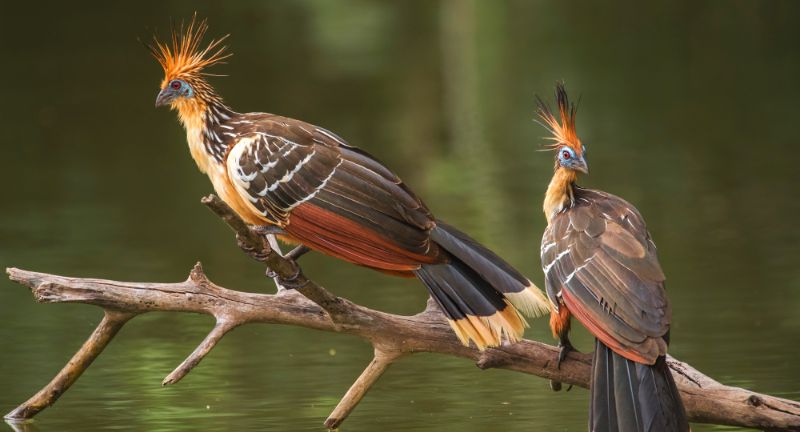
Shutterstock
The Hoatzin, also known as the “stinkbird,” is a bizarre bird native to the Amazon rainforest. It has a unique digestive system that ferments vegetation, causing a manure-like odor, which is the origin of its nickname. The hoatzin’s young have an unusual adaptation: they possess claws on their wings, allowing them to climb trees until their wings are fully developed for flight. This bird, with its striking blue face and rust-colored feathers, leads a communal lifestyle, often found in large groups along swampy rivers.
Jaguar
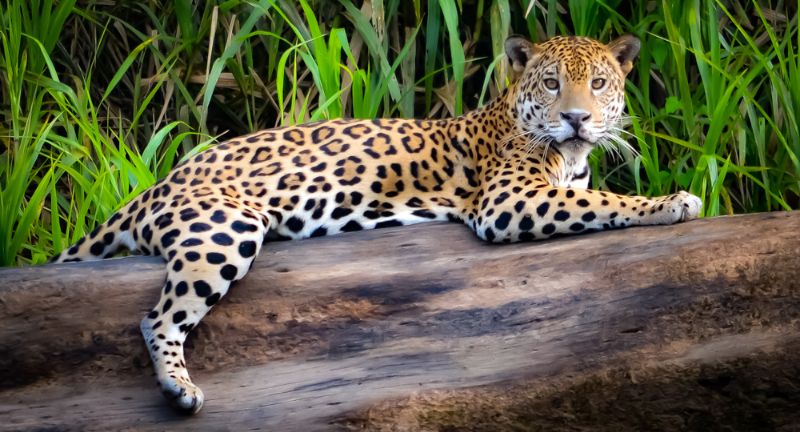
Shutterstock
The Jaguar is the largest predator in the Americas and a formidable presence in the rainforests of Central and South America. Its beautiful rosette-patterned coat provides excellent camouflage in the dense undergrowth, making it a stealthy hunter. Jaguars are versatile in their diet, preying on over 85 species ranging from fish to mammals. They are solitary animals, with territories that can span over 50 square miles in dense jungle environments.
Amazon River Dolphin
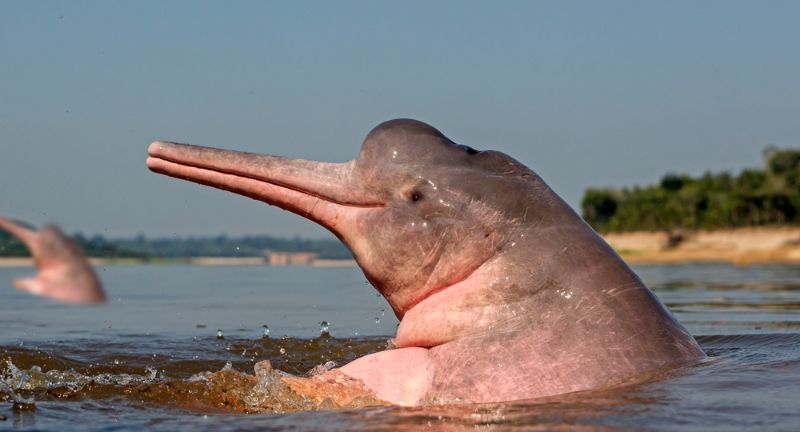
Shutterstock
The Amazon River Dolphin, or pink dolphin, is an iconic species found in the freshwater rivers of the Amazon Rainforest. Its distinctive pink coloration varies from pale to bright pink, which becomes more vibrant as the dolphin ages. These intelligent creatures have a flexible neck and a long, thin snout filled with sharp teeth, aiding in the capture of fish, their primary diet. They play a crucial role in local folklore and are considered to be the most intelligent of the river dolphin species.
Pygmy Marmoset
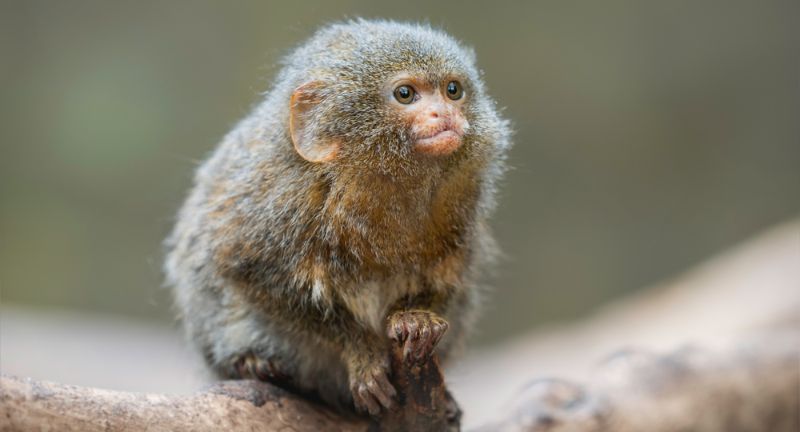
Shutterstock
The Pygmy Marmoset, the world’s smallest monkey, is a remarkable creature native to the rainforests of the western Amazon Basin. Weighing just over 100 grams, this tiny primate has specialized teeth for gouging tree bark to feed on sap and gum. Despite its diminutive size, the pygmy marmoset is a social animal, living in groups that communicate through a complex system of vocalizations, body language, and chemical signals. Its ability to blend into the rainforest canopy makes it difficult for predators to spot.
Tapir
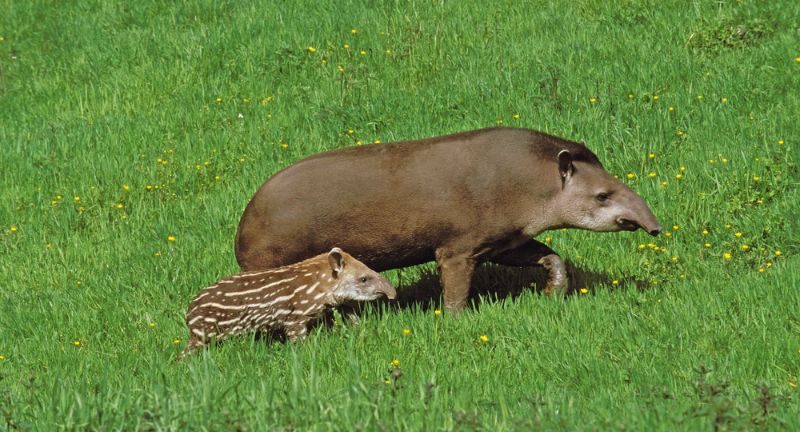
Shutterstock
The Tapir is an unusual-looking mammal with a prehensile snout, resembling a cross between a pig and an elephant. Found in the rainforests of South and Central America, as well as Southeast Asia, tapirs play a crucial role in seed dispersal, contributing to the health of their ecosystems. They are mostly nocturnal, foraging for leaves, fruits, and berries under the cover of night. Despite their size, tapirs are excellent swimmers and can often be found near water bodies, where they take refuge from predators.
Tarsier
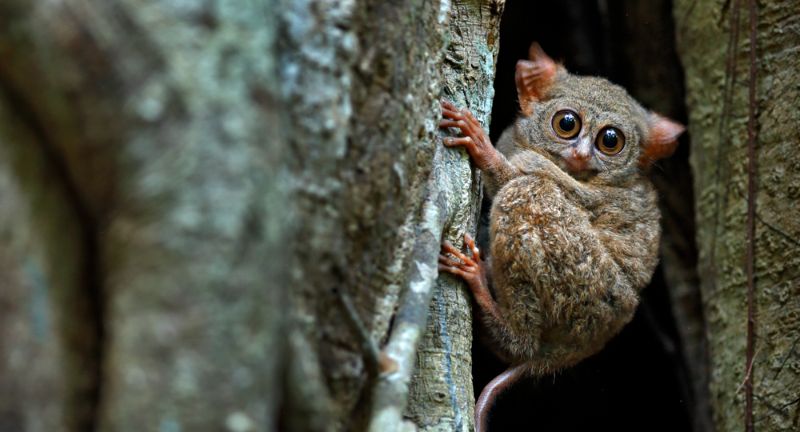
Shutterstock
The Tarsier is a small primate with enormous eyes, each of which is as large as its brain. Native to the rainforests of Southeast Asia, these nocturnal creatures are among the oldest primates, with fossils dating back 45 million years. Tarsiers are carnivorous, feeding primarily on insects, and are known for their incredible jumping ability, which allows them to catch prey or move between tree branches. Their unique anatomical features, including their elongated tarsal bones, give them their name and enable their remarkable agility.
Capybara
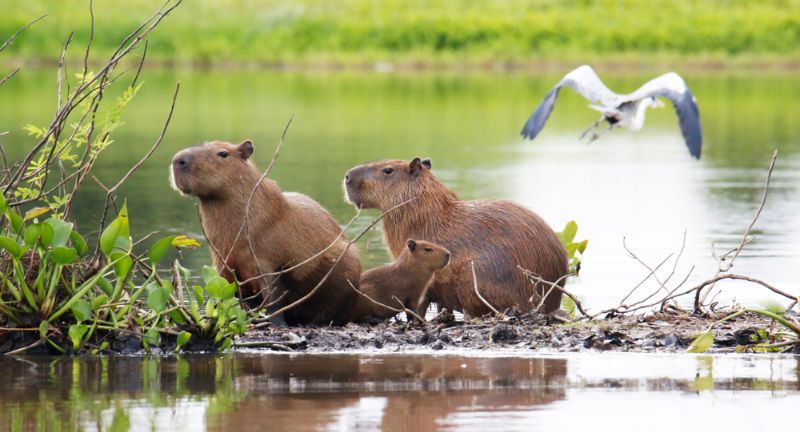
Shutterstock
The Capybara is the largest rodent in the world, reaching sizes of up to 140 pounds and residing in the rainforests of South America. These social animals live in groups along rivers, lakes, and swamps, where they are adept swimmers and can remain submerged for up to five minutes. Their diet consists mainly of grasses and aquatic plants, contributing to the maintenance of their habitats. Capybaras are key prey for many predators, including jaguars, anacondas, and caimans, playing an important role in the food web of their ecosystems.
Sloth
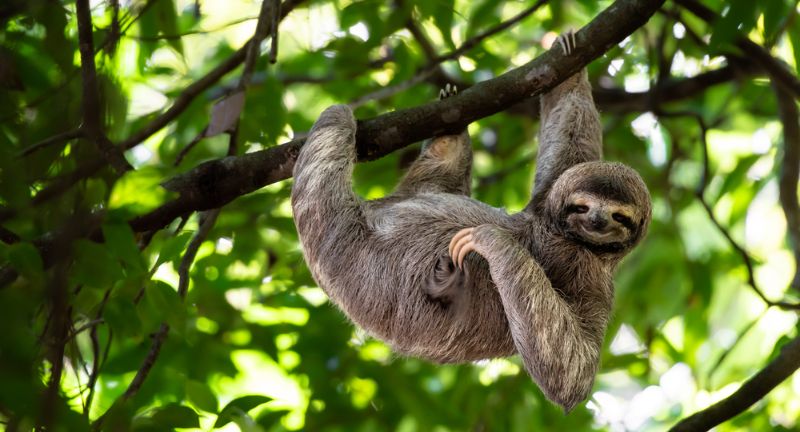
Shutterstock
Sloths are renowned for their slow movement, spending most of their lives hanging upside down in the rainforests of Central and South America. These creatures have adapted to a low-energy diet of leaves, which takes a long time to digest, contributing to their lethargic lifestyle. Their fur hosts a unique ecosystem of algae, insects, and even moths, blending them into the treetops and providing camouflage against predators. Despite their slow nature, sloths are excellent swimmers and can cross rivers to find new feeding grounds or mates.
Leafcutter Ant
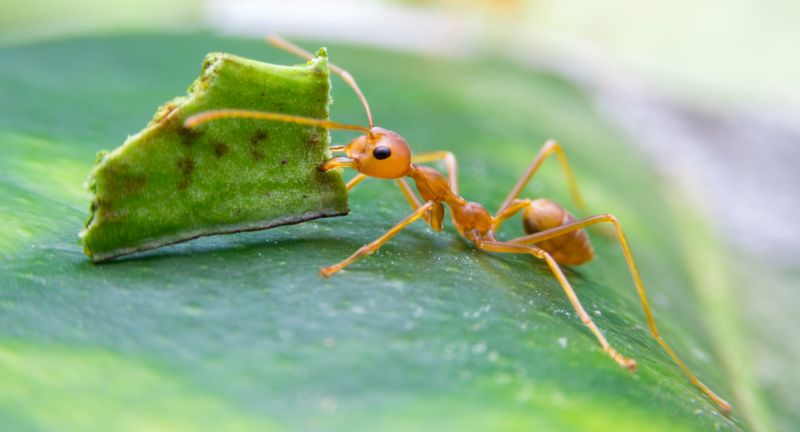
Shutterstock
Leafcutter ants are fascinating insects, found in the tropical rainforests of the Americas, known for their remarkable ability to cut and transport leaves back to their nests. These leaves are not consumed directly but are used to cultivate a fungus, which serves as their primary food source. The ants have a highly organized social structure, with different roles including workers, soldiers, and the queen, demonstrating an incredible example of insect society and cooperation. Their underground nests can be massive, housing millions of individuals and affecting the forest floor’s ecology by enriching the soil.
Orangutan
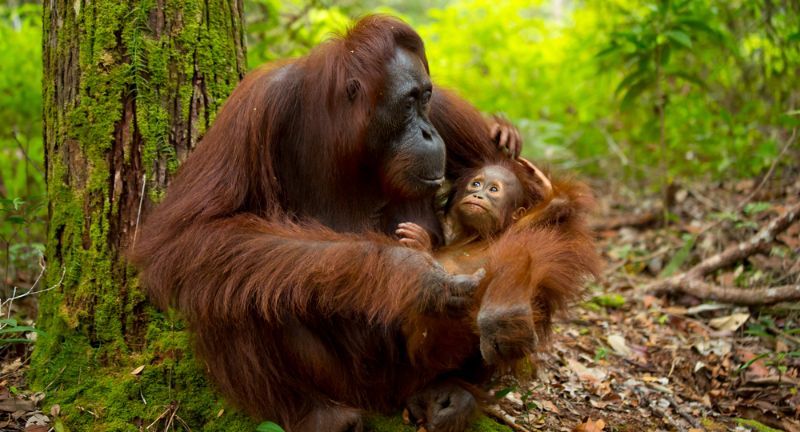
Shutterstock
Orangutans, with their distinctive red fur, are the largest arboreal mammals, spending most of their lives in trees in the rainforests of Borneo and Sumatra. These intelligent primates have been observed using tools for foraging and constructing elaborate sleeping nests each night from branches and foliage. Their diet mainly consists of fruit, along with leaves, bark, and occasionally insects, reflecting their role as seed dispersers in their ecosystems. Orangutans are critically endangered, facing threats from habitat loss due to deforestation, palm oil plantations, and illegal wildlife trade.
Conclusion
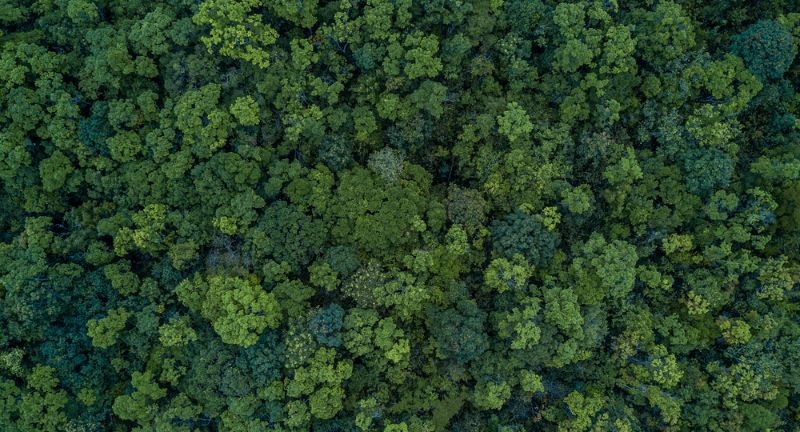
Shutterstock
As we conclude our exploration of the 30 most unusual rainforest animals, it’s evident that the rainforest is not just a collection of trees, but a complex, vibrant community bursting with life in its most extraordinary forms. These animals, with their unique adaptations and ecological roles, highlight the incredible creativity of nature and the importance of preserving these ecosystems against the threats of deforestation, climate change, and biodiversity loss. Each creature, from the elusive jaguar prowling through the underbrush to the ethereal glass frog with its transparent skin, serves as a reminder of our planet’s fragility and the urgent need to protect these irreplaceable habitats. By valuing and conserving the rainforest, we ensure that future generations can continue to discover and learn from its hidden wonders, sustaining the biodiversity that is vital for the health of our planet.
ADVERTISEMENT - CONTINUE BELOW
About Bon Voyaged
Welcome to Bon Voyaged, your gateway to a world of adventure, exploration, and cultural discovery. Whether you're an intrepid globetrotter planning your next big adventure, a travel enthusiast seeking inspiration for your bucket list, or simply someone looking to escape through the wonders of travel from the comfort of your own home, our platform is here to provide you with a wealth of information, tips, and inspiration. Join us in celebrating the beauty and diversity of our world as we share stories, recommendations, and a passion for wanderlust that knows no boundaries.
More From Bon Voyaged
ADVERTISEMENT
ADVERTISEMENT


TRAVEL5 days ago
Boats, Pubs, and Beautiful Views: Why a Canal Vacation is a Must-Do in the UK
Cruising along the UK’s canal system offers a travel experience unlike any other. With over 2,000 miles of picturesque waterways,...


TRAVEL6 days ago
London for Less: 25 Amazing Free Activities for Visitors
London is a city that seamlessly blends history, culture, and modern attractions, with something for everyone to enjoy. While many...


TRAVEL2 weeks ago
The Ultimate UK Travel Guide for English Lit Lovers
The United Kingdom is a literary paradise, filled with the homes, haunts, and inspirations of some of the world’s greatest...


TRAVEL2 weeks ago
Surf’s Up! 25 Perfect Beaches for First-Time Surfers
Learning to surf is an exciting and rewarding experience, but choosing the right beach can make all the difference for...


